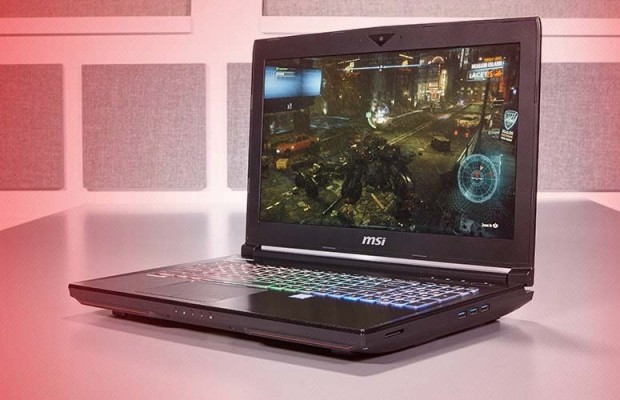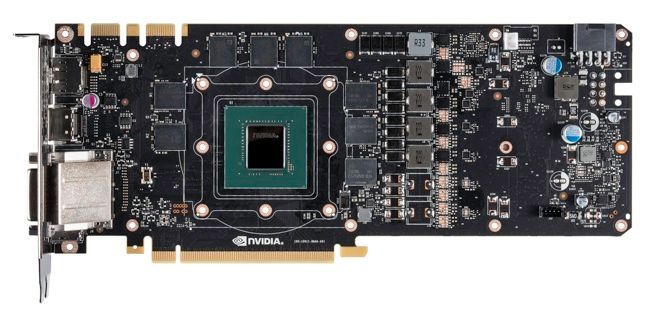Don’t Buy a Gaming Laptop Without Pascal, Unless You Hate Yourself
Hey there, champ. You seem like a nice enough gamer. Don't you want nice things? Nice things that deliver power rivaling a desktop that's VR-ready and overclockable? If not, then go ahead and spend over $1,000 to buy an older, non-Pascal gaming laptop without a 120-Hz G-Sync display.
I mean, I'm sure you'll love those significantly lower frame rates. You can just game on medium settings, right? No.
Friends don't let friends buy out-of-date tech, so I'm imploring you not to impulsively buy that about-to-be-discontinued relic — because it's not good enough. Nvidia's new Pascal GPU, also known as the GTX 10 series, has significantly shrunk the gap between notebooks and desktops. So don’t even entertain the thought of saving a few dollars by buying last year's model. Here are a few reasons why.
VR-Ready Laptops for Everyone
You read that right. Every gaming laptop sporting Pascal is automatically VR-ready, even the lower-tier 1060 GPU. Essentially, that means that something as slim as the Razer Blade can now support both the HTC Vive and the Oculus Rift without breaking a sweat.
MORE: The Best Gaming Laptops
When I ran the SteamVR Performance Test on the MSI GT62VR, it notched 10.1, placing it firmly in the Very High quadrant of the test, while the Asus G752VS delivered 10.5. If you were considering picking up an external graphics amp for VR, you might want to save that money for all the VR content.
Sign up to receive The Snapshot, a free special dispatch from Laptop Mag, in your inbox.
Pascal Power Equals Higher Framerates
Gaming laptops have gotten increasingly powerful over the years, but Pascal takes it to another level. At long last, Nvidia has dropped the mobile designation and has begun putting desktop chips into mobile chassis. I compared laptops outfitted with last-gen Nvidia GeForce GTX 970M GPUs, including the Alienware 15, Asus ROG Strix and Digital Storm Equinox, against the MSI GT62VR Dominator Pro and its Nvidia GeForce GTX 1070 GPU. It was no contest.
During Metro: Last Light, the Dominator Pro — well, dominated — scoring a crazy 82 fps on high at 1080p. The would-be competition couldn't even clear our 30-fps playability threshold. I upped the ante and brought in the GeForce GTX 980M-equipped Acer Predator 17 and the Gigabyte P37X v5, which fared a little better at 38 fps, but not much.
MORE: Unleash the Power: A Guide to Overclocking Your Nvidia Pascal Laptop
Finally, I brought out what I thought would be the big guns with the Acer Predator 17 X, Origin Eon17-SLX and the MSI GT72 Dominator Pro Dragon Edition — all of which have desktop 980 chips. The Predator 17 X came the closest at 68 fps, while the Eon17 and GT72 hit 57 and 49 fps, respectively.
Overclocking Awesomeness
While you could overclock a few last-gen notebooks, with Pascal you can squeeze every bit of potential out of your system. With a few tweaks, using some reliable GPU overclocking software like MSI Afterburner, you can transform your laptop into a real hellcat. And if you have an overclockable processor like the one in the Asus ROG G752VS OC Edition, you can really ramp up the performance. I mean, who says no to more power? Nobody, that's who.
G-Sync: Now Coming to a Screen Like You
While Pascal is nothing to sneeze at, it's not the only attraction in this show. With this new generation of gaming laptops, you're going to see a lot more G-Sync displays. G-Sync, if you're unfamiliar with it, is Nvidia software that syncs the screen's refresh rate with the GPU for smoother frame rates, free of ghosting and tearing.
In its previous iteration, G-Sync would cap the refresh rate at 75 Hz. This time around, select systems will have a silky smooth 120 Hz. If that weren't enough, some notebooks will have the ability to run G-Sync in 2560 x 1440. You can also game in 4K, but not with a 120-Hz refresh rate, unfortunately.
Ansel Makes Every Game Pretty as a Picture
Have you ever played a game that was postcard-pretty? Now you can snap that perfect shot and keep it or share it with friends using Nvidia's Ansel software. Available for several AAA titles, including The Witcher 3: Wild Hunt, and Mirror's Edge Catalyst, Ansel lets you take 360-degree, in-game screenshots — it's like a DSLR for games.
Once Ansel is activated, you can capture shots in any position in High Dynamic Resolution (HDR) or super resolutions like 46080 x 25920. If you ever wanted to see your favorite game characters' pores, this is your tech. Like any good camera app, Ansel offers several filters that allow you to make the shot your own.
Taking things a step further, if you do the 360-degree capture, you can then view it in a VR headset such as the Samsung Gear VR or Google Cardboard. You can also upload your artistic creation to YouTube or Google Photos.
Battery Boost 3.0
As powerful as many gaming laptops are, their biggest weakness is their short battery lives. Most can only last 3 or 4 hours on our battery test, which only consists of continuous web surfing over Wi-Fi. Now imagine what happens to the battery life when you start gaming.
MORE: Laptops with the Longest Battery Life
Nvidia's hoping to help you reach the next castle with its refined Battery Boost technology. The graphics-chip maker is claiming up to 30 percent more battery life compared to last-gen Maxwell laptops. When it's enabled, Battery Boost efficiently directs power to all of the components for optimal performance when the laptop is rendering. It also lets you set a maximum frame rate, which should allow you to play untethered for longer. Finally, gamers can create custom rules for the laptop to follow when the system is unplugged.
Bottom Line
Nvidia's Pascal chips have raised the bar so high that it seems like Maxwell is two generations old instead of one. Considering the cost of most gaming rigs and how many years you'll be using them, why would you even think of buying one that's already way out of date?
Do yourself a favor, save your money and get the gaming laptop you need for today's games and tomorrow's VR.

Sherri L. Smith has been cranking out product reviews for Laptopmag.com since 2011. In that time, she's reviewed more than her share of laptops, tablets, smartphones and everything in between. The resident gamer and audio junkie, Sherri was previously a managing editor for Black Web 2.0 and contributed to BET.Com and Popgadget.


